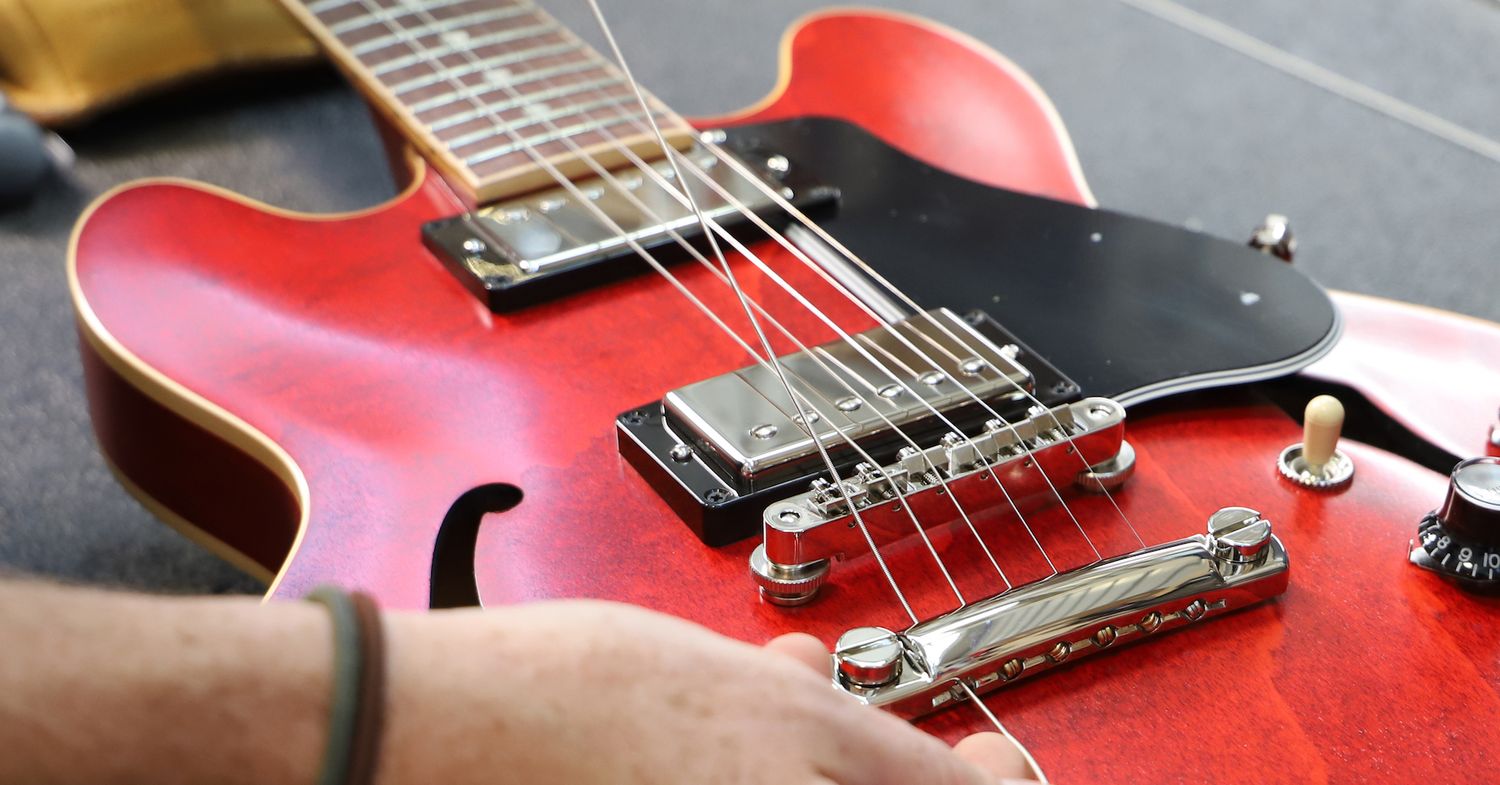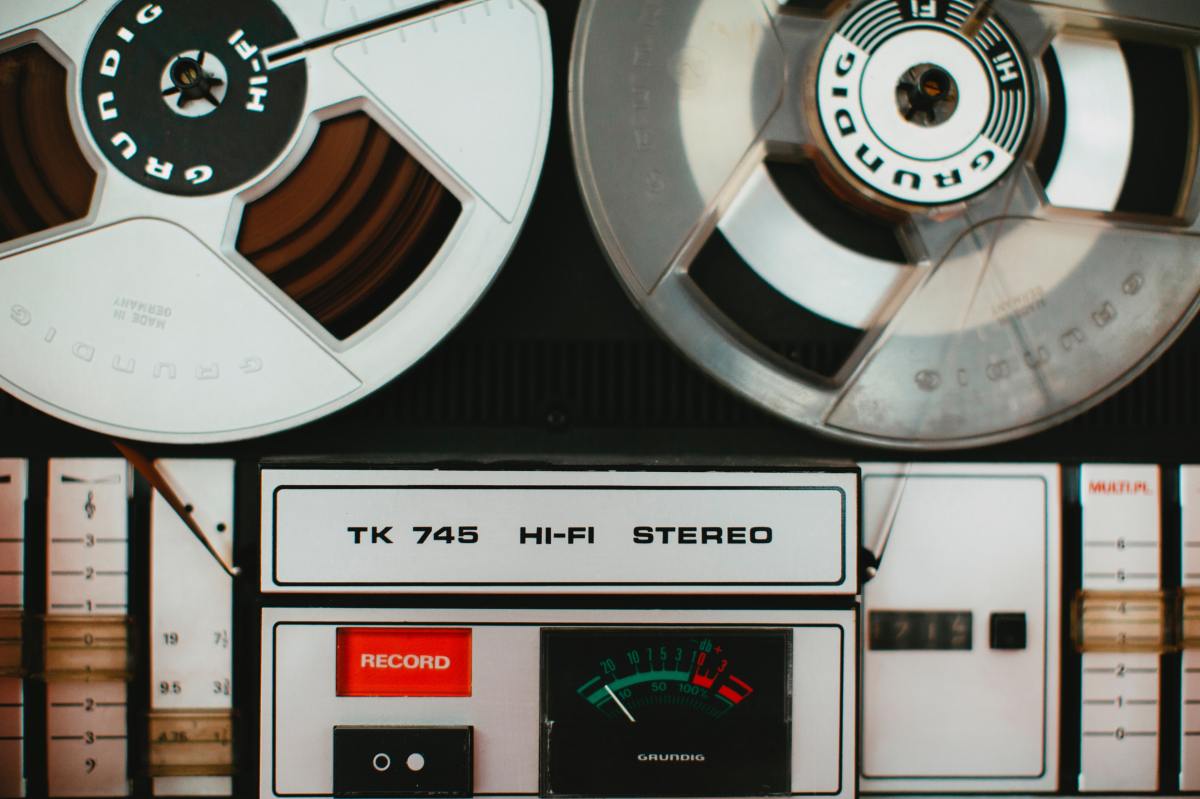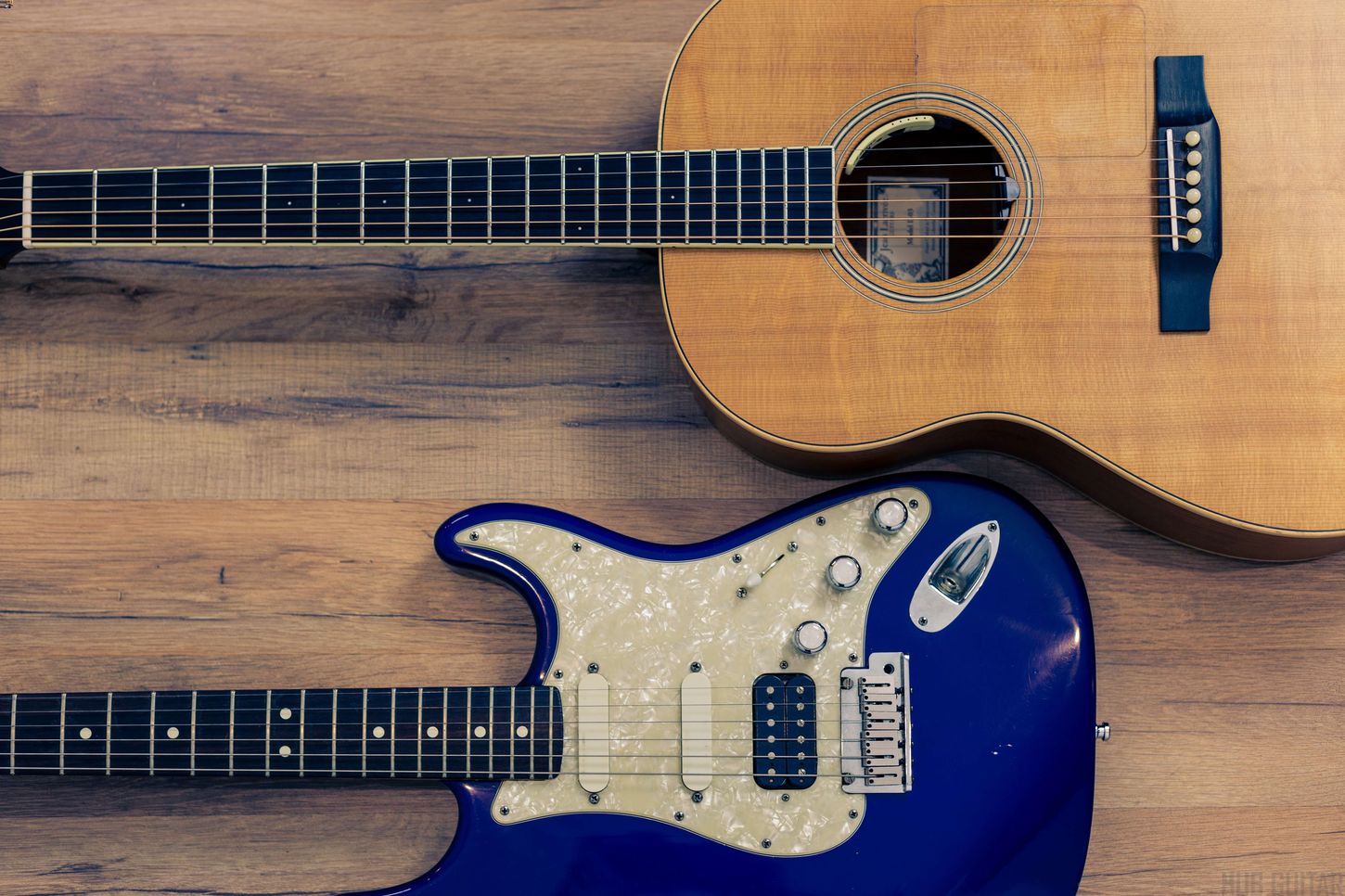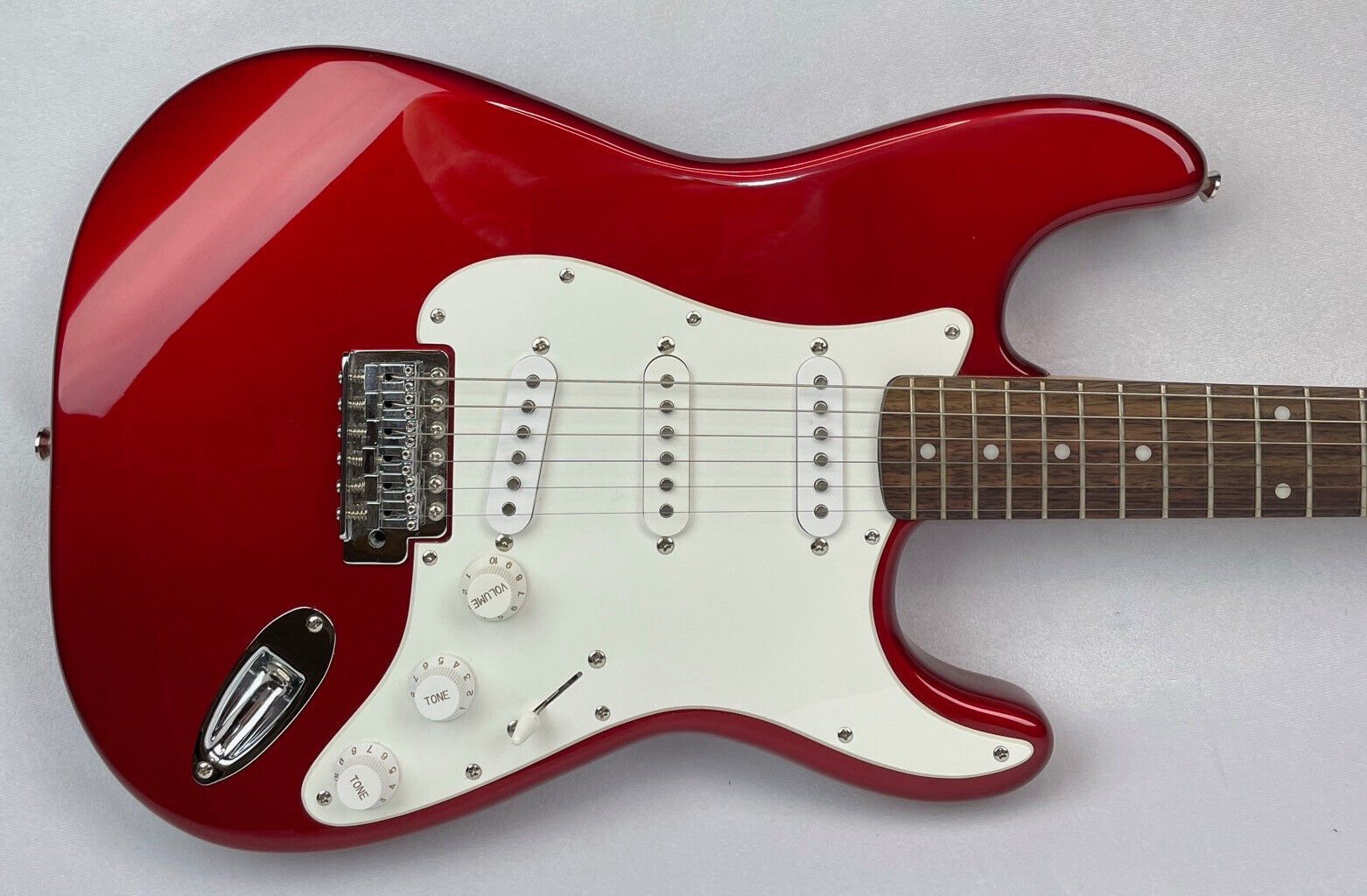Home>Production & Technology>Acoustic>Which Is Better: Electric Or Acoustic Guitar


Acoustic
Which Is Better: Electric Or Acoustic Guitar
Published: March 12, 2024
Discover the pros and cons of acoustic guitars compared to electric guitars. Find out which type of guitar is better suited to your playing style and musical preferences. Explore the differences and make an informed decision.
(Many of the links in this article redirect to a specific reviewed product. Your purchase of these products through affiliate links helps to generate commission for AudioLover.com, at no extra cost. Learn more)
Introduction
When it comes to the world of music, the debate between electric and acoustic guitars has been a longstanding point of contention among musicians and enthusiasts. Both instruments have their own unique characteristics, and the choice between them ultimately boils down to personal preference, playing style, and musical goals. Understanding the differences between electric and acoustic guitars is crucial for anyone looking to embark on their musical journey or expand their collection.
The acoustic guitar, with its hollow body and sound hole, is revered for its natural and resonant sound. It's the quintessential instrument for intimate performances, campfire sing-alongs, and unplugged jam sessions. On the other hand, the electric guitar, with its sleek, solid body and magnetic pickups, is synonymous with rock 'n' roll, jazz, blues, and a myriad of other genres. Its ability to be amplified and manipulated through effects pedals and amplifiers opens up a world of sonic possibilities.
As we delve into the nuances of each instrument, it's important to note that both have their own merits and drawbacks. Factors such as sound quality, portability, maintenance, cost, and versatility play a pivotal role in determining which type of guitar best suits a musician's needs and preferences. By exploring these aspects in detail, we can gain a deeper understanding of the electric versus acoustic guitar debate and make informed decisions when it comes to selecting the right instrument for our musical endeavors.
Sound Quality
The sound quality of a guitar is a defining factor that significantly influences a musician's choice between electric and acoustic instruments. The acoustic guitar, with its resonant and natural sound, is renowned for its ability to fill a room with warm, rich tones. The hollow body of an acoustic guitar allows the sound to resonate and project without the need for amplification, creating an immersive and organic listening experience. Whether strummed gently for a soothing melody or played with vigor for a lively rhythm, the acoustic guitar's sound is inherently captivating and evocative.
On the other hand, the electric guitar offers a different sonic landscape. Equipped with magnetic pickups that convert string vibrations into electrical signals, the electric guitar's sound can be shaped and amplified to suit a wide range of musical styles and preferences. When plugged into an amplifier, the electric guitar's sound can be manipulated through various effects pedals, allowing for distortion, reverb, chorus, and other tonal enhancements. This versatility empowers musicians to explore a myriad of sounds, from gritty and aggressive to smooth and ethereal, making the electric guitar a dynamic and expressive instrument.
While the acoustic guitar boasts a pure and unadulterated sound, the electric guitar's ability to be amplified and modified opens up endless possibilities for sonic experimentation. The choice between the two ultimately comes down to the desired sound aesthetic and the musical context in which the instrument will be used. Whether it's the raw, unfiltered resonance of an acoustic guitar or the customizable and electrifying tones of an electric guitar, both instruments offer distinct sonic experiences that cater to different artistic sensibilities and performance settings.
Portability
Portability is a crucial consideration for musicians who are constantly on the move or need to transport their instruments to various locations. When it comes to portability, the acoustic guitar and electric guitar present distinct advantages and limitations.
The acoustic guitar, with its self-contained design and lack of reliance on amplification, is inherently portable. Its hollow body and neck make it a lightweight and compact instrument that can be easily carried from one place to another. Whether it's a casual outdoor gathering, a songwriting session at a friend's house, or a performance in a cozy venue, the acoustic guitar's grab-and-go nature makes it an ideal companion for musicians who value mobility and spontaneity. Additionally, acoustic guitars do not require additional equipment such as amplifiers and cables, further simplifying the logistics of transporting the instrument.
On the other hand, the electric guitar, while more compact and streamlined than its acoustic counterpart, often requires additional gear for optimal performance. Amplifiers, cables, effects pedals, and other accessories are essential components of an electric guitar setup, adding bulk and complexity to the overall portability of the instrument. However, advancements in amplifier and speaker technology have led to the development of portable and lightweight amplification solutions, catering to the needs of electric guitarists who prioritize mobility without compromising on sound quality.
It's important to note that the portability of an electric guitar largely depends on the availability of amplification at the intended location. While electric guitars offer the flexibility to plug into a variety of amplifiers and sound systems, the reliance on external equipment can pose logistical challenges in certain scenarios. Musicians who frequently perform in venues with established sound systems may find the electric guitar's portability to be less of a concern, as they can leverage existing amplification infrastructure.
Ultimately, the portability of a guitar is influenced by a musician's lifestyle, performance requirements, and personal preferences. Whether it's the grab-and-go convenience of an acoustic guitar or the tailored portability of an electric guitar with a compact amplifier setup, both instruments offer mobility solutions that cater to the diverse needs of musicians on the go.
Maintenance
Maintenance is a crucial aspect of guitar ownership, as it directly impacts the instrument's playability, longevity, and overall performance. When comparing the maintenance requirements of electric and acoustic guitars, several key differences come to light, each influencing the ownership experience in distinct ways.
Acoustic guitars, with their simple and unadorned construction, generally require less maintenance compared to electric guitars. The absence of electronic components and intricate hardware simplifies the upkeep process, making acoustic guitars more accessible to beginners and seasoned players alike. Routine maintenance tasks for acoustic guitars often involve changing strings, adjusting the truss rod for neck relief, and keeping the instrument clean and free from dust and debris. Additionally, periodic humidification is essential to protect the wood from drying out and potentially developing cracks, especially in dry climates. These maintenance practices contribute to the preservation of the acoustic guitar's natural resonance and structural integrity.
On the other hand, electric guitars, with their complex electronics, hardware, and amplification requirements, demand a more involved approach to maintenance. In addition to string changes and general cleaning, electric guitars may require adjustments to the pickup height, intonation, and truss rod, all of which directly impact the instrument's playability and tonal characteristics. Furthermore, the electronic components, including pickups, potentiometers, and switches, may necessitate occasional troubleshooting and maintenance to ensure optimal performance. Amplifiers and effects pedals, integral parts of the electric guitar setup, also require regular maintenance to uphold their functionality and sound quality.
It's worth noting that the maintenance demands of electric guitars can vary based on the complexity of the instrument's design and the specific features of the electronic components. For example, guitars with tremolo systems or active pickups may require additional attention and expertise during maintenance procedures. Additionally, the reliance on amplification equipment introduces an additional layer of maintenance considerations, as amplifiers, cables, and effects pedals require periodic inspection, cleaning, and potential repairs.
In essence, while acoustic guitars offer a more straightforward maintenance experience, electric guitars demand a more comprehensive and nuanced approach to upkeep due to their intricate components and amplification requirements. Both instruments, however, reward diligent maintenance with consistent performance, longevity, and an enjoyable playing experience. By understanding and addressing the unique maintenance needs of each guitar type, musicians can ensure that their instruments remain in optimal condition, ready to inspire and resonate for years to come.
Cost
When it comes to purchasing a guitar, cost considerations play a significant role in the decision-making process for musicians and enthusiasts. The cost disparity between electric and acoustic guitars encompasses various factors, including the initial instrument purchase, associated accessories, and long-term ownership expenses.
Acoustic guitars, often regarded for their simplicity and traditional craftsmanship, offer a range of options that cater to diverse budgetary constraints. Entry-level acoustic guitars, crafted from quality tonewoods and featuring reliable construction, provide an accessible entry point for beginners and budget-conscious players. These affordable acoustic instruments deliver respectable sound quality and playability, making them ideal choices for those embarking on their musical journey or seeking a supplementary guitar for casual use.
On the other hand, acoustic guitars crafted by renowned luthiers and featuring premium materials and meticulous craftsmanship can command higher price points, appealing to discerning musicians who prioritize sonic excellence and artisanal quality. The wide spectrum of acoustic guitar pricing allows players to select instruments that align with their budget while meeting their performance and aesthetic preferences.
In contrast, the cost dynamics of electric guitars extend beyond the instrument itself, encompassing amplifiers, effects pedals, cables, and other accessories essential for achieving the desired sound and performance capabilities. While entry-level electric guitars offer affordability and versatility, the need for amplification and tonal shaping equipment introduces additional expenses that may influence the overall cost of establishing an electric guitar setup.
Furthermore, the electric guitar market features a diverse array of models, ranging from budget-friendly options to high-end instruments designed for professional musicians and collectors. The availability of electric guitars in various price brackets allows individuals to tailor their investment based on their musical aspirations, performance requirements, and budgetary considerations.
It's important to note that the long-term cost of guitar ownership extends beyond the initial purchase, encompassing maintenance, string replacements, potential upgrades, and accessories such as cases, stands, and straps. Understanding the comprehensive cost landscape associated with acoustic and electric guitars empowers musicians to make informed decisions that align with their financial resources and musical objectives.
Ultimately, whether investing in an acoustic or electric guitar, individuals have the opportunity to explore a wide range of options that cater to their budget while delivering exceptional craftsmanship, sound quality, and playability. By considering the cost implications alongside other factors such as sound quality, portability, maintenance, and versatility, musicians can navigate the guitar market with confidence, knowing that their chosen instrument reflects their artistic vision and financial considerations.
Versatility
Versatility stands as a defining characteristic that sets electric and acoustic guitars apart, showcasing their distinct capabilities and adaptability across various musical genres and performance settings. The electric guitar, renowned for its dynamic range and tonal flexibility, offers unparalleled versatility that resonates with musicians seeking to explore diverse sonic landscapes and express their artistic vision with precision and flair. Equipped with magnetic pickups and the ability to interface with amplifiers and effects pedals, the electric guitar empowers players to sculpt their sound with precision, from searing overdriven tones to ethereal ambient textures. Its adaptability across genres such as rock, blues, jazz, pop, and beyond positions the electric guitar as a cornerstone of modern music, capable of seamlessly transitioning from soulful ballads to blistering solos with finesse and authority.
In contrast, the acoustic guitar, with its inherent warmth and organic resonance, embodies a different form of versatility that thrives in intimate acoustic settings, folk gatherings, singer-songwriter performances, and beyond. Its unamplified nature and reliance on natural acoustic projection make it an ideal companion for unplugged performances, where its rich tonal character and expressive dynamics shine through. The acoustic guitar's versatility extends to its adaptability across genres such as folk, country, indie, and acoustic pop, where its emotive strumming and fingerstyle capabilities evoke a sense of authenticity and connection with audiences.
Furthermore, the acoustic-electric guitar, a hybrid instrument that combines acoustic resonance with built-in pickups and preamps, bridges the gap between the acoustic and electric realms, offering a versatile solution for musicians seeking the best of both worlds. This hybrid instrument allows players to harness the natural acoustic sound while having the option to amplify and shape their tone, catering to a wide range of performance scenarios and musical styles.
The versatility of both electric and acoustic guitars underscores their ability to transcend musical boundaries and adapt to the creative vision of the player. Whether it's the electric guitar's boundless sonic palette and genre-spanning prowess or the acoustic guitar's emotive resonance and intimate charm, both instruments offer a wealth of versatility that empowers musicians to explore, innovate, and connect with their audience on their own terms. Ultimately, the choice between electric and acoustic guitars in terms of versatility hinges on the individual's musical aspirations, performance requirements, and artistic sensibilities, each offering a distinct avenue for creative expression and sonic exploration.
Conclusion
In the perennial debate of electric versus acoustic guitars, the choice ultimately hinges on a myriad of factors, each bearing significance in the musical journey of players. The sound quality of acoustic guitars, characterized by their natural resonance and unamplified warmth, resonates with those seeking an intimate and organic sonic experience. Conversely, the electric guitar's versatility and tonal flexibility, amplified through a myriad of effects and amplification options, cater to musicians exploring a wide spectrum of genres and sonic textures.
Portability emerges as a pivotal consideration, with acoustic guitars offering grab-and-go convenience, while electric guitars, though more compact, often necessitate additional amplification equipment. Maintenance requirements also diverge, with acoustic guitars generally demanding less upkeep due to their simpler construction, while electric guitars, with their intricate electronics and amplification components, require a more nuanced approach to maintenance.
Cost considerations play a significant role, with acoustic guitars offering a range of options to accommodate diverse budgets, while the electric guitar's pricing landscape extends to include amplifiers, effects pedals, and accessories. The versatility of both instruments, each excelling in distinct musical contexts, underscores their adaptability across genres and performance settings, catering to the diverse artistic visions of musicians.
Ultimately, the choice between electric and acoustic guitars transcends a mere selection of instruments; it embodies a reflection of individual artistic expression, musical aspirations, and performance requirements. Whether it's the evocative strumming of an acoustic guitar under a starlit sky or the electrifying solos of an electric guitar on a grand stage, both instruments stand as conduits for creativity, emotion, and sonic exploration.
In the end, the decision between electric and acoustic guitars is deeply personal, shaped by the unique musical journey and aspirations of each player. Regardless of the chosen path, both instruments stand as timeless pillars of musical expression, each offering a distinct avenue for players to channel their creativity, connect with their audience, and embark on a lifelong odyssey of sonic discovery.











